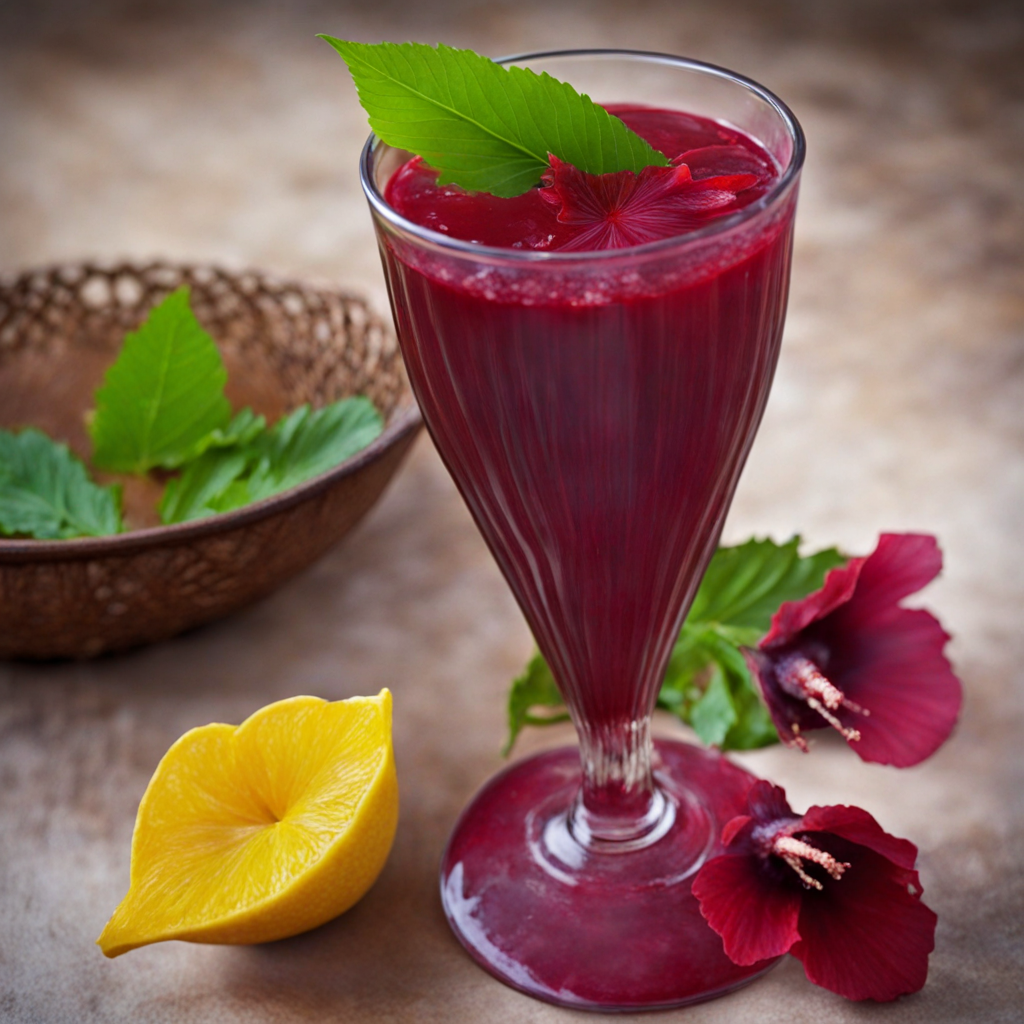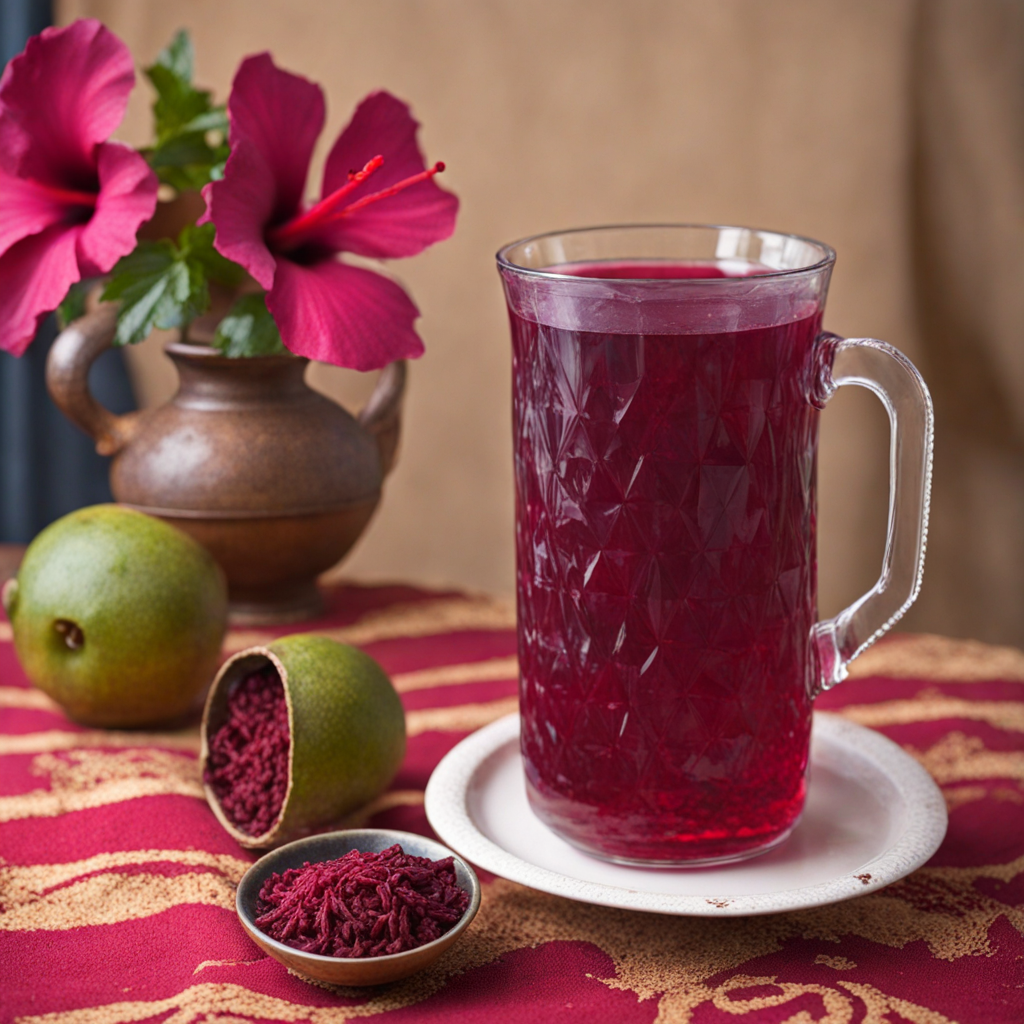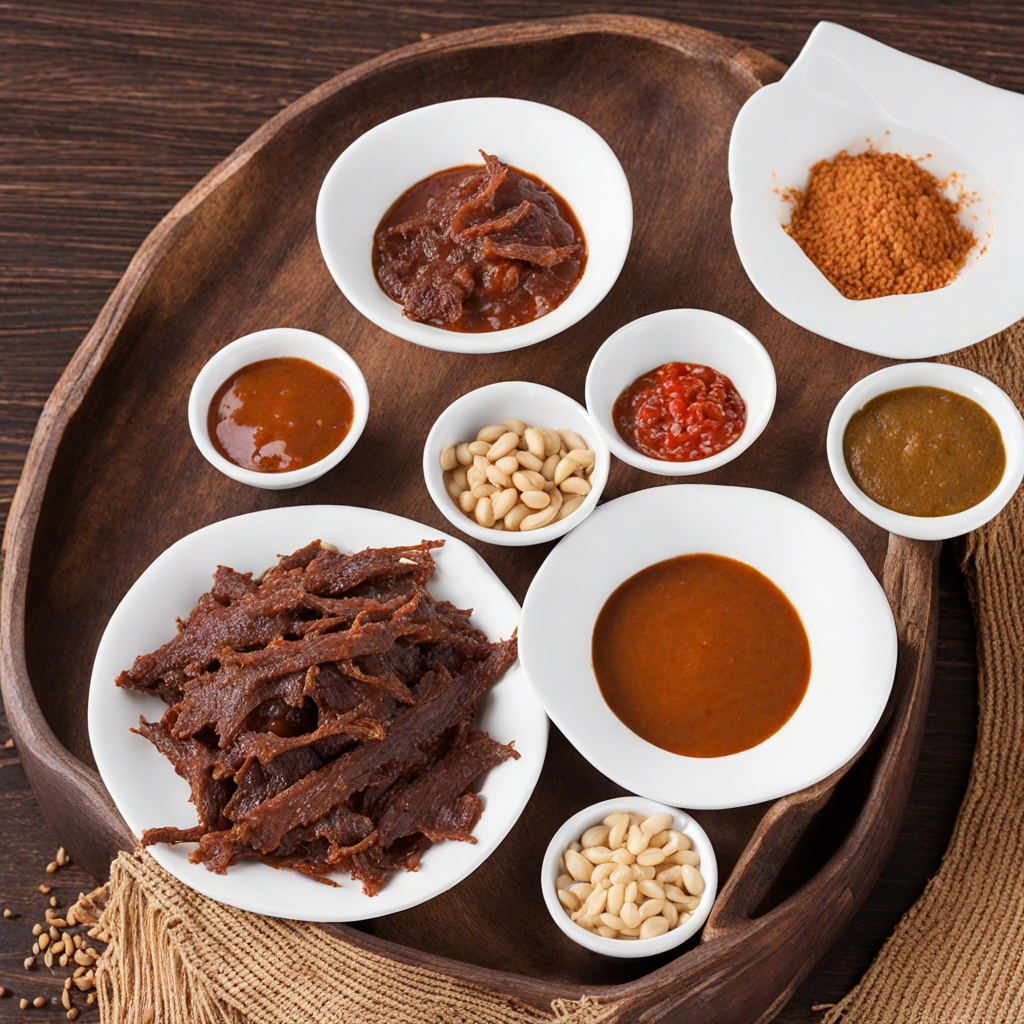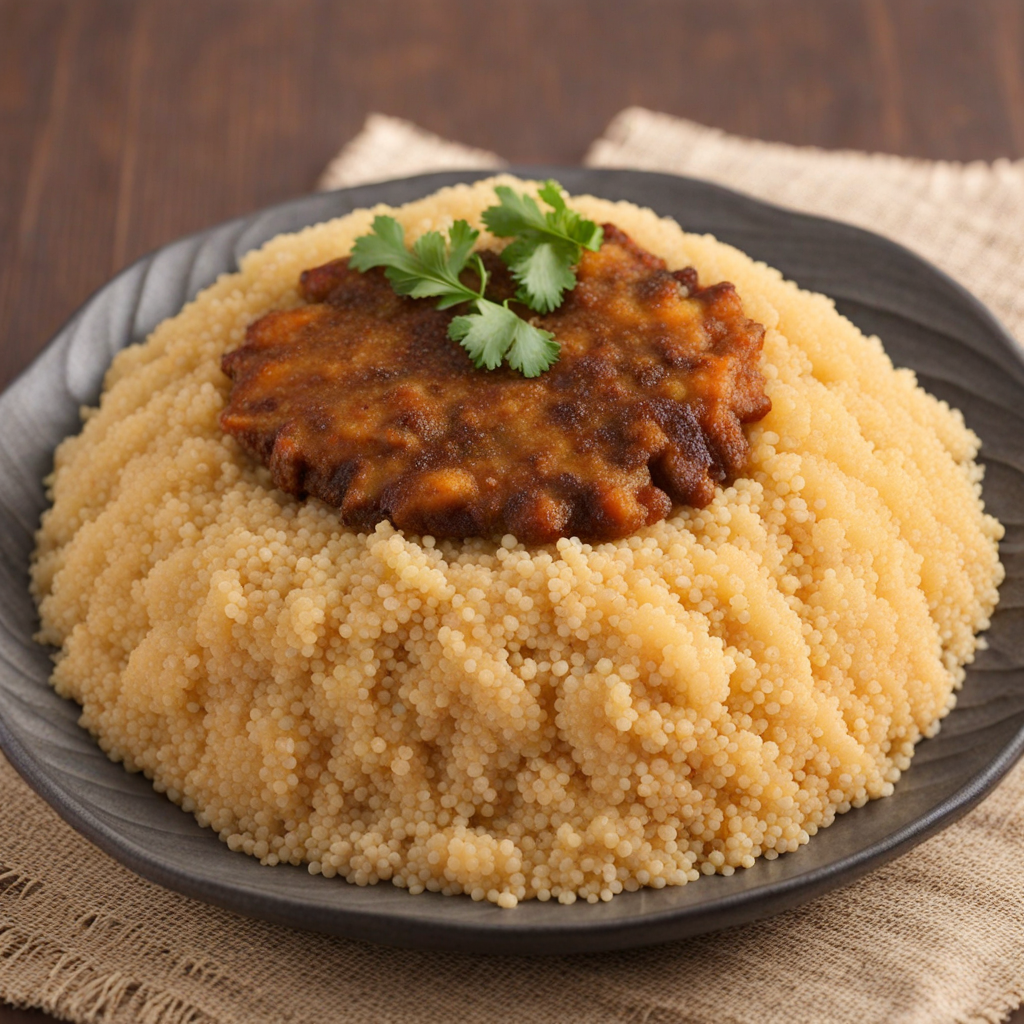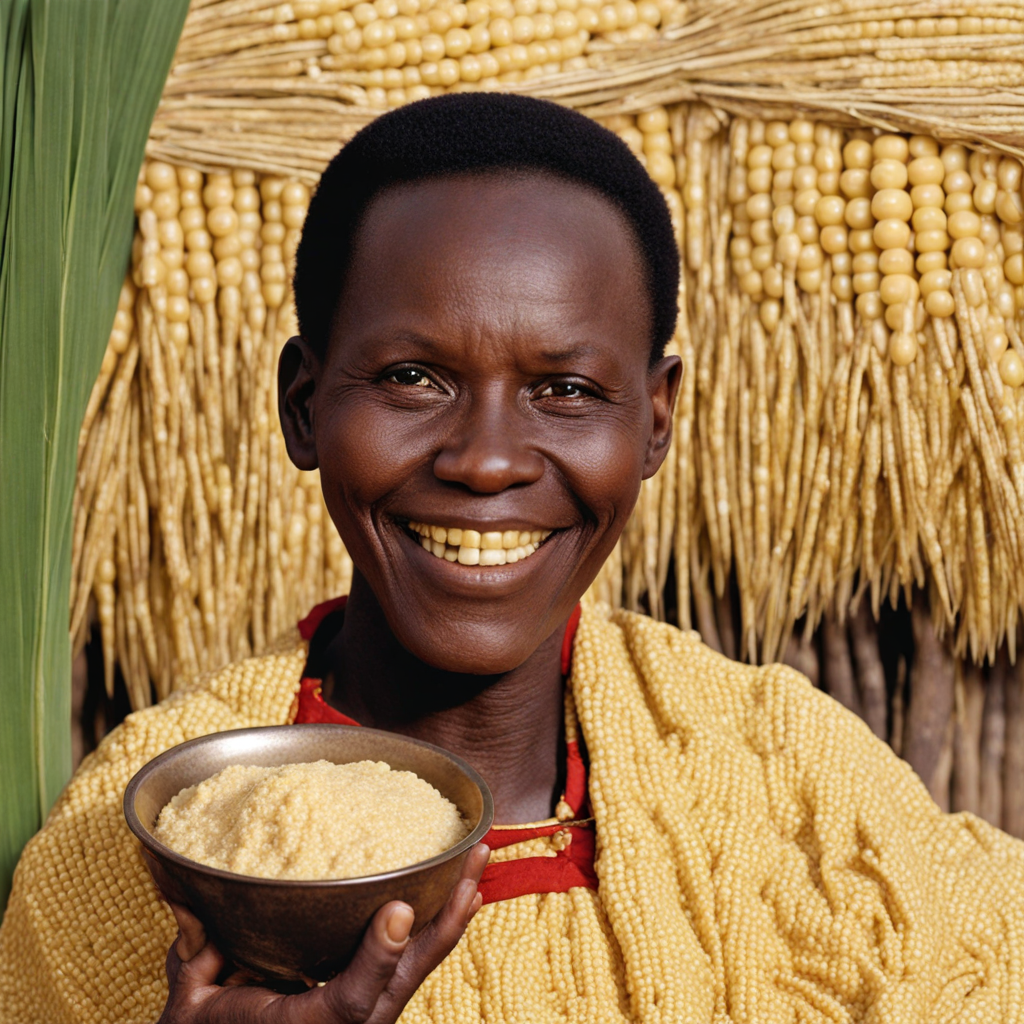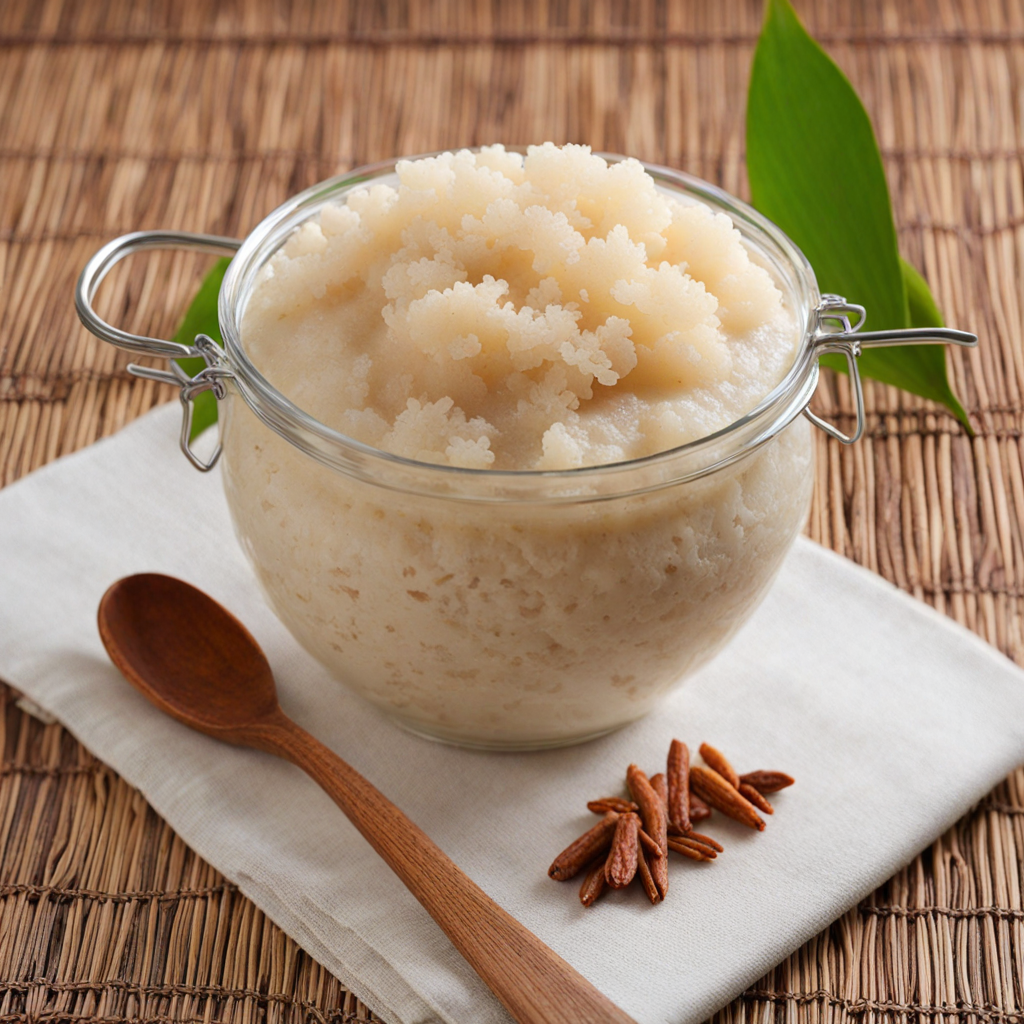Bissap
Bissap is a refreshing herbal drink widely enjoyed in Mali, made primarily from the vibrant hibiscus flower. The petals of the hibiscus are steeped in hot water, releasing a deep crimson hue that is as captivating as its flavor. This drink is often sweetened with sugar and can be enhanced with a variety of spices, such as mint, ginger, or even a hint of vanilla, making each sip a harmonious blend of tartness and sweetness. The infusion is not only visually striking but also offers a delightful tartness reminiscent of cranberries, making it a unique and invigorating beverage choice. The preparation of Bissap is steeped in tradition, often served during social gatherings and celebrations. It is a drink that embodies the spirit of Malian culture, reflecting the warmth and hospitality of its people. When served chilled, Bissap becomes a perfect thirst-quencher on hot days, allowing you to savor the essence of Mali with every refreshing gulp. The versatility of the drink is also noteworthy; it can be enjoyed plain or with added fruits like pineapple or orange for an extra layer of flavor. Beyond its delightful taste, Bissap is celebrated for its health benefits, as hibiscus is known to be rich in antioxidants and may aid in lowering blood pressure. This means that indulging in Bissap not only satisfies your taste buds but also promotes wellness. Whether you are sipping it at a bustling local market or enjoying it at home, Bissap offers a unique glimpse into the culinary heritage of Mali, inviting you to explore new tastes and experiences that are both refreshing and enriching.
How It Became This Dish
Bissap: A Journey Through Mali's Cultural Elixir In the vibrant tapestry of Mali’s culinary heritage, few beverages are as revered and emblematic as bissap. This captivating drink, made primarily from the dried calyces of the hibiscus flower, is deeply intertwined with the nation’s cultural identity, social gatherings, and historical narratives. To understand bissap is to embark on a journey through Mali's past, its people, and the natural bounty of its land. Origins: The Roots of Bissap The story of bissap begins in ancient times, with the hibiscus plant (Hibiscus sabdariffa) believed to have originated in West Africa. The plant, known for its vibrant red flowers and tart flavor, has been cultivated for centuries, not only for culinary purposes but also for its medicinal properties. While bissap is particularly associated with Mali, its roots extend beyond borders, finding a place in various cultures throughout West Africa and the Caribbean, where it is known by different names such as “sorrel” in Jamaica and “agua de jamaica” in Mexico. In Mali, the use of hibiscus to make bissap has been a traditional practice that dates back generations. The preparation of this refreshing drink is often passed down from mothers to daughters, symbolizing a continuity of cultural heritage. The hibiscus plant thrives in Mali’s warm climate, making it an accessible resource for many households, particularly in rural areas. Cultural Significance: A Drink of Community and Celebration Bissap is much more than just a drink; it is a symbol of community, hospitality, and celebration. In Mali, it is customary to serve bissap during significant social gatherings, including weddings, religious ceremonies, and family reunions. The vibrant red color of bissap, reminiscent of the rich earth of the Malian landscape, adds to the drink's festive presence, making it an integral part of celebrations. The preparation and sharing of bissap often become communal activities. Family members and friends gather to prepare the drink, which typically involves boiling the dried hibiscus flowers, sweetening the brew with sugar, and infusing it with flavors from mint, ginger, or citrus. This collective effort not only reinforces social bonds but also reflects the values of generosity and hospitality that are deeply ingrained in Malian culture. Furthermore, bissap holds cultural significance in various rituals and traditions. In some communities, it is offered to guests as a sign of respect and welcome. It is also believed to possess health benefits, with its high vitamin C content and natural antioxidants making it a popular choice for both hydration and wellness. Development Over Time: The Evolution of Bissap As Mali navigated through historical changes, including the impact of colonization and globalization, bissap evolved while remaining true to its roots. The French colonial period introduced new flavors and techniques, which influenced the preparation of bissap. The French brought their own culinary practices to the region, leading to a fusion of tastes that enriched traditional recipes. For instance, the use of spices like cinnamon and cloves became more common, adding depth to the drink's flavor profile. The post-colonial era saw an increased awareness of traditional foodways and a resurgence of interest in indigenous ingredients, including hibiscus. As Malians embraced their culinary heritage, bissap became a symbol of national pride. It was during this period that the drink began to gain recognition beyond local borders. As Malian expatriates settled in different parts of the world, they took bissap with them, introducing it to new audiences and promoting its cultural significance. In contemporary Mali, bissap has transcended its traditional role, becoming a staple in cafes and restaurants. Vendors often sell bissap in colorful roadside stalls, where it is served chilled and garnished with fresh mint leaves. Its accessibility and affordability make it a beloved refreshment for both locals and tourists alike. This commercialization of bissap has not only provided economic opportunities for many but has also helped to preserve the cultural legacy associated with the drink. Bissap Today: A Global Presence As the world becomes increasingly interconnected, bissap has emerged on the global culinary stage. Food enthusiasts and chefs worldwide are discovering the unique flavors of this West African beverage, leading to its inclusion in international menus and food festivals. The versatility of bissap allows it to be adapted into various forms, such as cocktails, sorbets, and even desserts, showcasing its potential beyond traditional consumption. In recent years, the health-conscious trend has further propelled bissap's popularity. With its natural ingredients and health benefits, it has found a place among the wellness community. Many people are now seeking out hibiscus tea for its purported properties, including lowering blood pressure and promoting hydration. This aligns with a growing interest in herbal teas and natural beverages, making bissap a timely addition to the modern diet. Conclusion: The Enduring Legacy of Bissap Bissap is more than just a drink; it is a cultural artifact that encapsulates the history, values, and traditions of the Malian people. From its origins in the fertile lands of West Africa to its modern iterations enjoyed around the globe, bissap serves as a reminder of the enduring power of food to connect people and foster community. As Mali continues to evolve, bissap remains a steadfast symbol of its rich culinary heritage, a testament to the resilience of traditions that unite generations and transcend borders. In a world increasingly fascinated by diverse culinary experiences, bissap stands out not only for its distinctive flavor but also for the story it tells—a story of roots, culture, and the unbreakable bonds that food can create. Whether sipped on a hot day in Mali or enjoyed in a cosmopolitan café abroad, bissap invites all to partake in a taste of Mali's vibrant spirit, celebrating the past while embracing the future.
You may like
Discover local flavors from Mali


